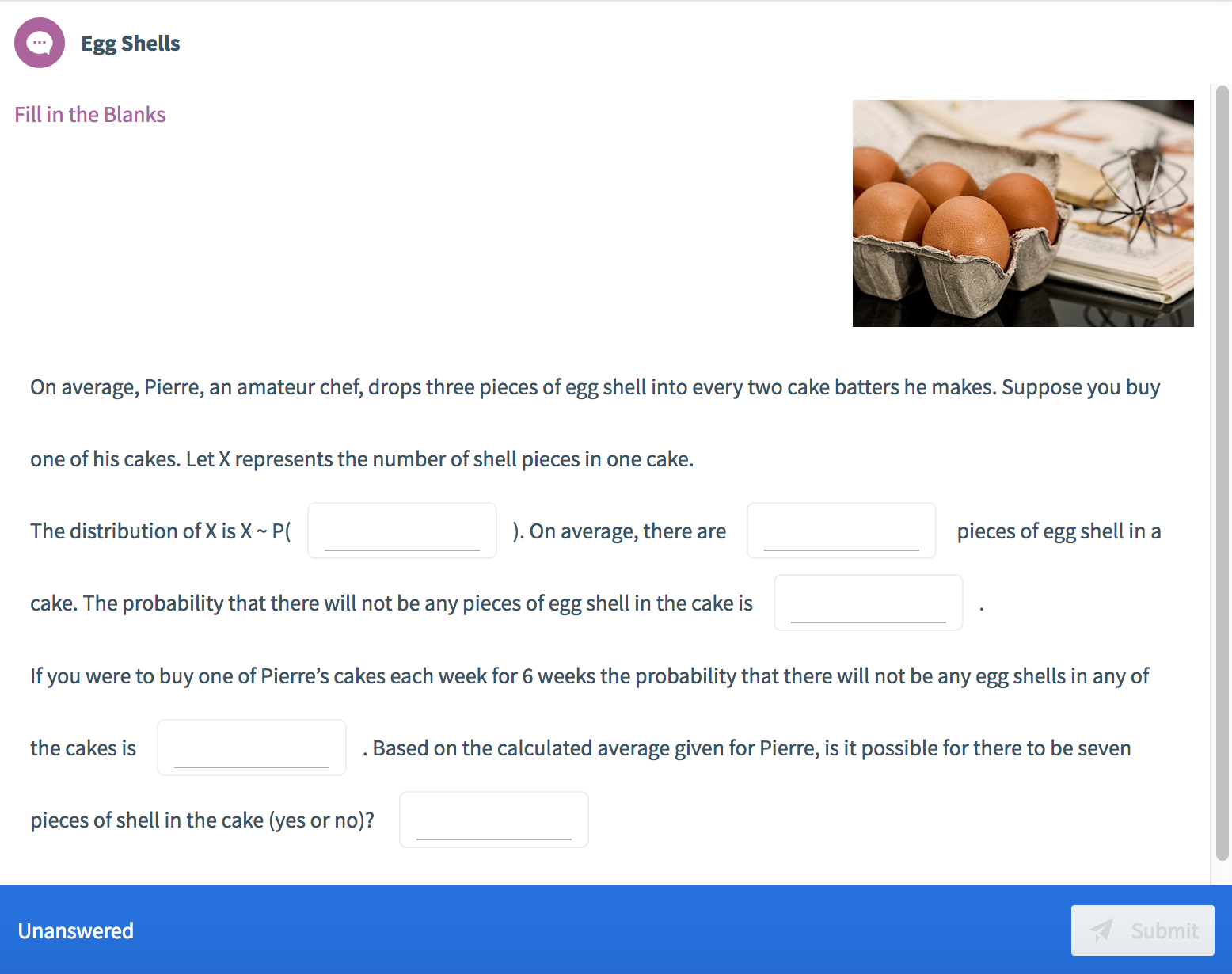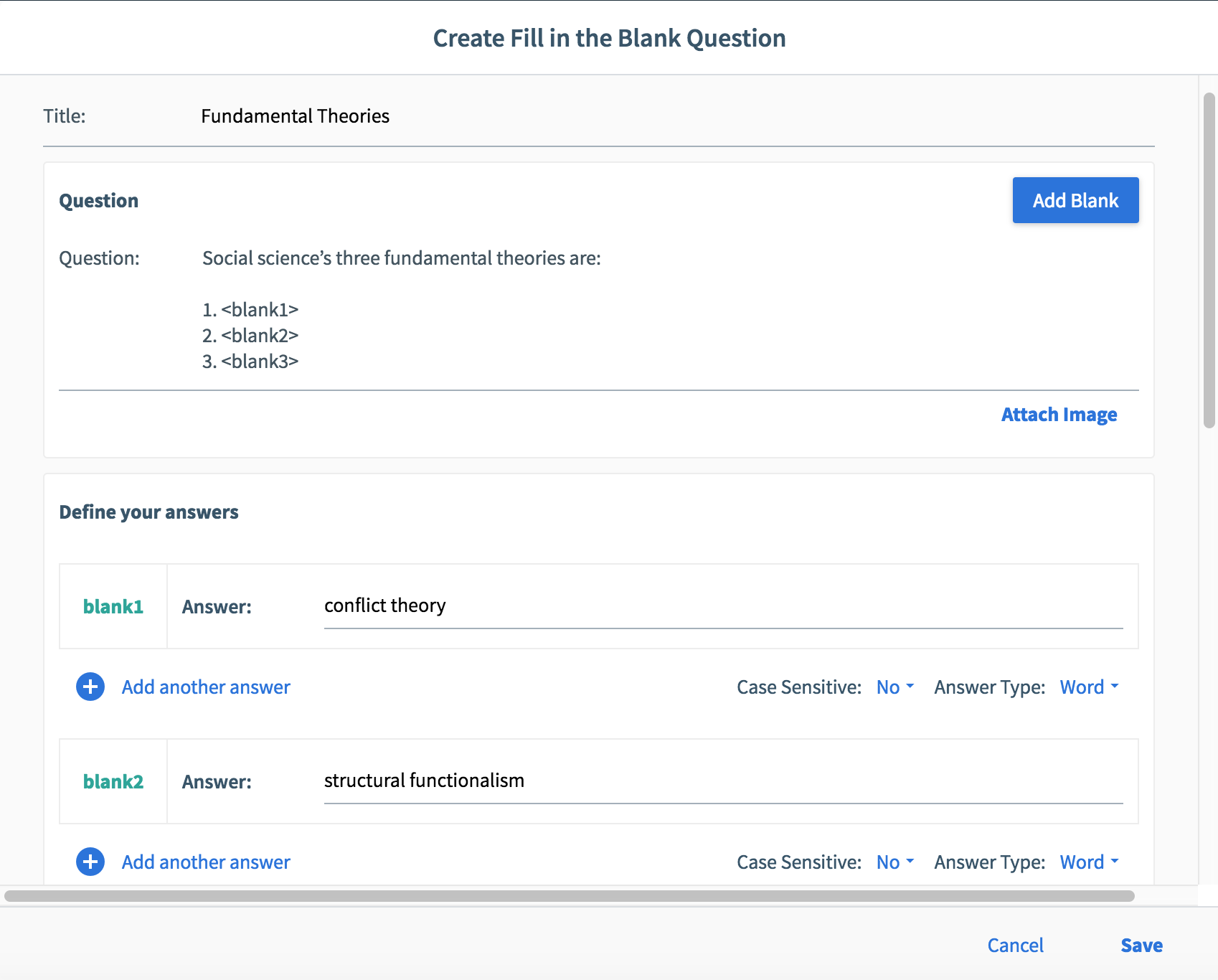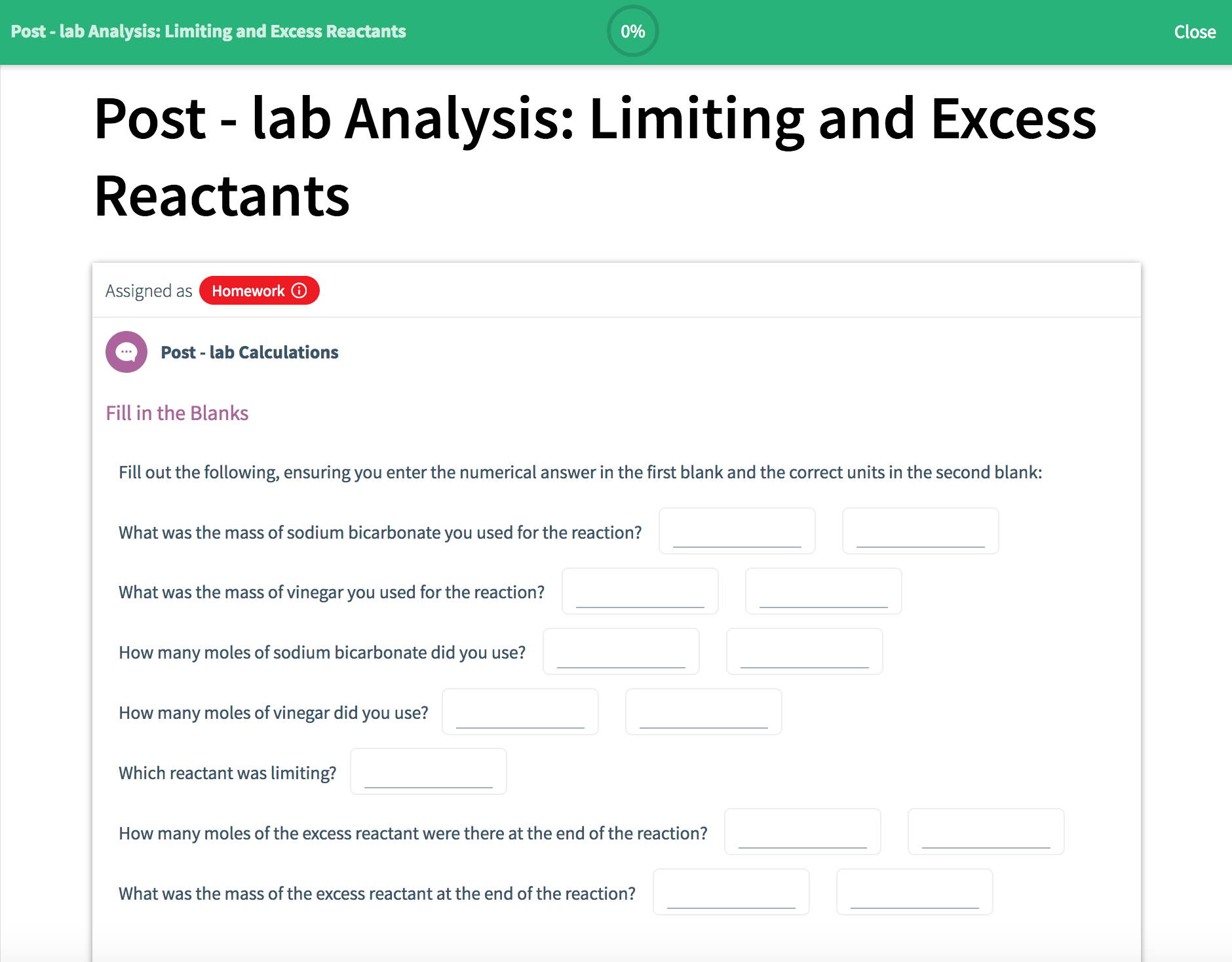When instructors decide to move their assessments online, they often find that for all the time they gain not having to grade, they lose something when it comes to nuance and complexity. This can particularly be the case with fill in the blank questions.
As a math professor, you might adopt online homework to avoid having to manually grade 65 statistics assignments every week, but then lose the ability to give students partial marks for wrong answers with correct process.
Or, if you’re a history prof, your polling software might encourage students to participate more, but the question types might be too simplistic for the needs of sophomores.
Fortunately, Top Hat’s brand new question type—Fill in the Blank—offers a flexible way to restore nuance to digital, auto-graded assessment questions. You can create questions with multiple inputs (or blanks), and determine whether the responses for each blank should be provided in words or numbers. For numeric answers, you can apply tolerances—and for words, multiple answers.
Here are three practical ways you can use this new feature to do more with your online assessments and grade more fairly.
Subscribe to Top Hat’s weekly blog recap
Get the best posts of the week delivered to your inbox:
1. Create multi-step problems
Math professors using Top Hat can use Fill in the Blank questions to include all the steps of a problem into one question. They can also give students a specified amount of time in which to complete it.

In this example, Professor Schultz wants to give her statistics students five minutes to complete a problem. While the time limit is implemented to simulate the test-taking environment, she still intends for this to be a low-stakes practice question, and using a Fill in the Blank question allows her to give students that didn’t arrive at the correct final answer credit for steps they got right along the way.
2. Ask for multiple examples
Social science students often have to learn a large number of specifically-named concepts, as well as examples of those concepts. The new feature allows professors to create lists where students need to submit multiple examples that correspond to a question.
Here, Professor McGregor asks his Sociology 101 course to list social science’s three fundamental theories.

3. Test numbers and units of measurement
If you teach in a lab setting, or want to assess students on their ability to read and analyze studies and experiments, you may find it useful to create a question that asks for both a numeric and alphabetic input. In the image below, Professor Alavi is looking to give students from her chemistry lab credit for a post-lab assignment. Here, they need to provide the correct calculation and the appropriate scientific unit of measurement in order to get full marks.
 For more ideas on writing fill in the blank questions, take a look at this post on the Top Hat Success Center:
For more ideas on writing fill in the blank questions, take a look at this post on the Top Hat Success Center:
Related story
Assigning randomly generated questions in class


